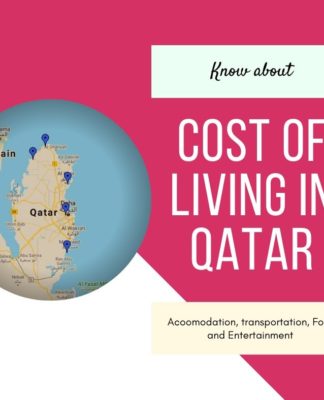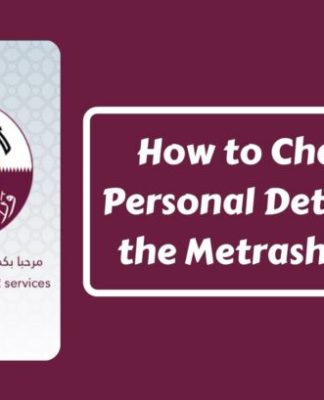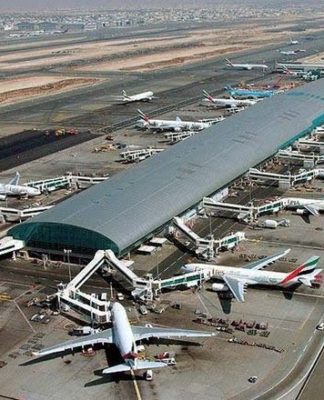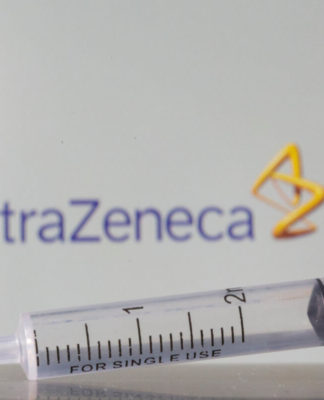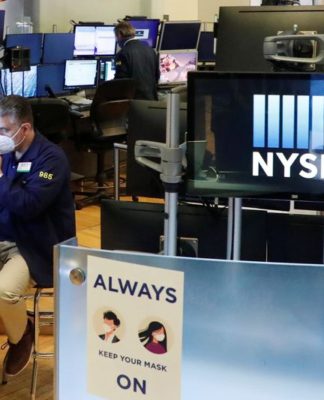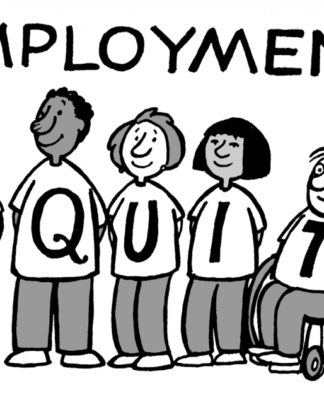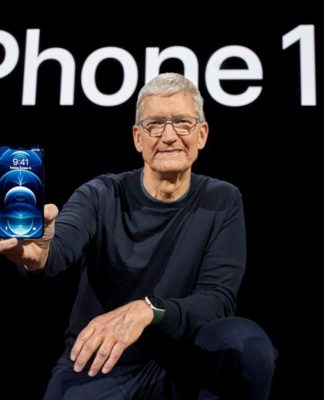NEW YORK
The most expensive street in America gets the Eric Adams treatment
Past efforts to redesign Fifth Avenue in Manhattan have pitted high-end retailers against transportation advocacy groups.
The city wants the new Fifth Avenue to make more space for pedestrians.
Mayor Eric Adam’s early vision for Fifth Avenue makes more space for pedestrians and adds new plant life. | Fifth Avenue Association
By DANIELLE MUOIO DUNN
02/12/2023 07:00 AM EST
NEW YORK — Fifth Avenue is one of the most iconic destinations in midtown Manhattan, the backdrop of classic films like “Breakfast at Tiffany’s,” the entry point to Central Park and a marquee destination for shoppers at luxury stores like Bergdorf Goodman.
But it’s also choked with car traffic and inundated with pedestrians making their way around Nike, Coach and Rockefeller Center. New York City officials have complained for years that the thoroughfare is outdated, mismanaged and especially incapable of handling visitors during the holiday season.
Now, as one of his first major infrastructure initiatives, Mayor Eric Adams plans to reconstruct the famous shopping corridor — wading into a fiery debate that has pitted high-end retailers and transportation advocacy groups over the future of car access in the heart of the nation’s biggest metropolis.
Elected leaders are eager to draw people back to the area that has seen steep declines in foot traffic since the start of the pandemic, threatening tax revenue that funds essential city services and a hospitality industry that’s a major driver of tourism and jobs. But they must weigh any changes against the street’s function as a major transportation artery for hundreds of thousands of bus riders with connections to several subway lines.
The move comes three years after former Mayor Bill de Blasio first attempted to transform Fifth Avenue into an express busway but pulled the plan amid opposition from the high-end shops that dot the corridor, drawing outcry from public transportation advocates. Top city officials said this time is different, with real estate players coming to the table with a vested interest in revitalizing an area that has struggled to adapt to the era of hybrid work. How the city will balance competing interests is still unclear.
“The value of public space is elevated considerably after Covid,” Meera Joshi, the deputy mayor for operations, said in an interview. “It’s an investment in the community. It’s an investment in increased foot traffic for the stores, which translates into tax dollars, which translates into jobs.”
The city said it will contract with a design firm this year to put together a plan that will add pedestrian space, speed up buses and improve street safety. Other major municipalities, from San Francisco to Columbus, Ohio, have released their own proposals to reinvigorate office-heavy downtowns in part by restricting access to private vehicles.
More than half of office workers in major U.S. cities returned to their desks last week, a first since the pandemic began, according to swipe data tracked by Kastle Systems. But major New York employers don’t expect that figure to budge much higher anytime soon, according to a recent survey by the Partnership for New York City, a nonprofit membership organization of more than 300 city executives.
Drawing people back will require some incentives, said Madelyn Wils, chief adviser for the Fifth Avenue Association, the business group that represents retailers in the area.
“It’s the spine of Manhattan, and when you come there, you should be experiencing something beautiful,” Wils said. “You should want to walk all the way from Central Park to Bryant Park.”
Retail spending has come roaring back in virtually every business district in the city’s outer boroughs, but remains down 9 percent in midtown Manhattan, according to “Making New York Work for Everyone,” the state and city’s post-pandemic recovery plan. Restaurant and bar spending has declined 35 percent in the area spanning 34th Street to 60th Street, with foot traffic down 23 percent.
Manhattan’s business districts generate nearly 60 percent of the citywide office and retail property tax revenues and 18 percent of overall citywide property tax revenue, making their stabilization key to pay for municipal services.
“What is clear today in the wake of the pandemic is that Midtown is the area that has suffered the most,” said Dan Doctoroff, a deputy mayor in Mike Bloomberg’s administration who led Sept. 11 recovery efforts and helped create the city’s new economic recovery plan.
MOST READ
1162482291
U.S. jet downs unidentified object over Canada
U.S. downs unidentified object over Lake Huron, third destroyed since Chinese spy balloon
The College Board slams DeSantis administration comments on African American studies
Hochul faces an ‘uprising’ over her plan to build new housing in NYC suburbs
Republicans clash with prosecutors over enforcement of abortion bans
“But, in order to make Midtown more vibrant, it’s not just about public places and making it more mixed-use,” he added. “You also have to address transportation issues, and you also have to grow.”
Elected leaders in other major U.S. cities also see a need to limit space for cars if they want to draw people back to downtown cores that are highly dependent on the Monday-through-Friday office culture, but many of the visions still preserve at least some space for personal vehicles.
The strategic plan for Columbus, Ohio, which still needs approval from its City Council, notes that most residents want alternative transportation to reduce car dependency. The plan includes renderings that add protected bus and bike lanes on multi-lane roads that have limited sidewalk space. San Francisco’s action plan similarly proposes strategies like “road diet” and “pedestrianized street” to bring more use to downtown corridors.
In New York, Adams will wade into a territorial dispute over how best to approach the most expensive shopping street in the world that also serves roughly 115,000 bus riders on an average weekday.
De Blasio’s plan to block most vehicle traffic on Fifth Avenue to accommodate a new busway faced steep opposition from major real estate players whom the progressive Democratic publicly shunned. Steve Roth, the CEO of Vornado, which operates 2.6 million square feet of street retail space, personally implored de Blasio to reconsider before the plan was ultimately pulled, the New York Times reported. The Fifth Avenue Association, whose chair is a Vornado executive, continues to oppose the elimination of private car access.
“That would have exacerbated the exodus of a lot of tenants,” Wils, of the Fifth Avenue Association, said of the busway plan. The real estate-backed nonprofit funds supplementary services that help maintain the corridor, such as street cleaning.
Adams, a more moderate Democrat, has taken a notably friendlier posture toward real estate than his predecessor, once declaring, “I am real estate.” He has received more than $150,000 in donations from people working in real estate in support of his reelection.
The Fifth Avenue Association is helping pay for the city’s new vision plan, along with three other private groups that manage different areas along the street: the Grand Central Partnership, the Bryant Park Association and the Central Park Conservancy.
Dan Biederman, president of the Bryant Park Corporation, a not-for-profit founded in 1980 to renovate and operate the nearly 10-acre park, similarly said his “bias” would be to preserve vehicle access in some capacity.
“You hate to, and I’m sure the merchants feel this way; you hate to say no private cars ever on Fifth. It would be very hard to do that,” Biederman said.
Transportation advocacy groups said they will be holding Adams to his early promise to use the planning process as an opportunity to increase bus speeds along Fifth Avenue. Adams must meet a local mandate to add 150 miles of bus lanes throughout the five boroughs by the end of 2025, a target he’s not on track to hit after his first year in office.
A conceptual rendering the city provided of Fifth Avenue’s potential transformation keeps private car access but widens the sidewalks.
This rendering of the city’s vision for Fifth Avenue would preserve some private car access. | Fifth Avenue Association
“Fifth Avenue is not just one of New York’s most famous luxury boutique destinations. It’s also a major bus corridor, which is to say the whole avenue isn’t just for tourists,” said Danny Pearlstein, policy and communications director for the Riders Alliance. “It’s also for New Yorkers, including folks from upper Manhattan and the Bronx, who elected Adams mayor.”
Early renderings from the mayor’s office showing Fifth Avenue’s potential transformation reflect the plan circulated by the Fifth Avenue Association in 2021 as an alternative to the express busway, said E.J. Kalafarski, the transportation chair of Manhattan Community Board 5, which plays an advisory role on local land use issues. It preserves two lanes for buses and reduces the number of lanes for private vehicles from three to one. It also adds a bike lane, widens sidewalks and improves green space.
“Mayor Adams’ proposal definitely sounded immediately like it was inspired by the Fifth Avenue Association’s proposal,” he said.
The board previously voted in support of the Fifth Avenue Association’s concept.
The goal this time around is to strike a potential compromise with all the vested interests, at a time where there’s big appetite for post-pandemic infrastructure improvements.
“Transit is central to this issue,” said City Council Member Keith Powers, whose district includes a sizable portion of Fifth Avenue. “But to do something there and ignore the pedestrian side of the equation, you’re missing a big component of it.”
Joshi, the deputy mayor, said the city’s goal is to make the street “more than just a shopping district,” with entertainment and seating that encourages people to spend the day walking the corridor. She’s pledged not to be swayed by the sizable real estate influence helping steer the project.
“It has to be grounded in reason and fact,” she said. “Private partners may have opinions about those things, but we can’t avoid our duty to the larger public.”
Areas of the city that closed their streets to traffic at the height of the pandemic recorded a 19 percent increase in average sales at restaurants and bars compared to before, the city reported in a recent study of its Open Streets program. A December pilot program that made a stretch of Fifth Avenue car-free for three Sundays helped increase foot traffic and resulted in a “moderate” boost in sales, Wils said, without giving specifics.
The Adams administration plans to make early improvements to Fifth Avenue this year and release a construction plan in two years. The ultimate cost — and who pays — is still unclear.
The city, which recently committed $375 million in the budget for new parks and plazas, expects it won’t be moving forward alone.
“Part of having a vested interest means you’re vested, and that often takes dollars,” Joshi said.
FILED UNDER: NEW YORK, TOURISM, MICHAEL BLOOMBERG, ERIC ADAMS
POLITICO
Huddle
A play-by-play preview of the day’s congressional news
Huddle logo
Loading
You will now start receiving email updates
You are already subscribed
Something went wrong
EMAIL
Your Email
INDUSTRY
Select Industry
EMPLOYER
Employer
By signing up you agree to allow POLITICO to collect your user information and use it to better recommend content to you, send you email newsletters or updates from POLITICO, and share insights based on aggregated user information. You further agree to our privacy policy and terms of service. You can unsubscribe at any time and can contact us here. This site is protected by reCAPTCHA and the Google Privacy Policy and Terms of Service apply.
SIGN UP

















